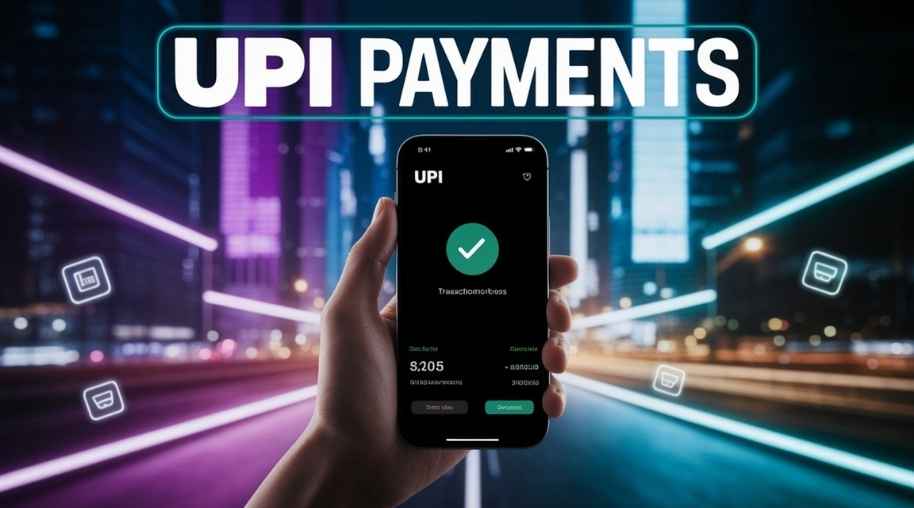UPI Full Form-Unified Payments Interface
by Shashi Gaherwar
0 1682
Unified Payments Interface (UPI): Revolutionizing Digital Payments
Introduction
The Unified Payments Interface (UPI) has revolutionized digital payments in India, making transactions seamless, instant, and highly secure. Launched in 2016 by the National Payments Corporation of India (NPCI), UPI enables users to transfer money between bank accounts through a mobile application, eliminating the need for traditional banking methods. Today, UPI has become a global benchmark for digital payments, driving financial inclusion and reducing dependency on cash transactions.

This article explores the workings, benefits, impact, challenges, and future prospects of UPI in transforming India’s financial landscape.
How UPI Works
UPI is a real-time payment system that allows users to link multiple bank accounts to a single mobile application. It operates on the Immediate Payment Service (IMPS) infrastructure, ensuring fast and secure transactions 24/7.
Key Features of UPI:
- Instant Fund Transfers: Transactions are processed in real time, eliminating delays.
- Single-Click Authentication: Secure payments using UPI PIN and two-factor authentication.
- Interoperability: Users can link accounts from multiple banks under one UPI-enabled app.
- QR Code Payments: Scan-and-pay functionality enhances convenience for merchants and customers.
- No Need for Bank Details: Users can transfer money using a Virtual Payment Address (VPA) instead of account numbers and IFSC codes.
- Bill Payments and Subscriptions: UPI allows users to automate bill payments and recurring transactions.
- Peer-to-Peer (P2P) and Merchant Payments: Supports both personal transactions and business payments.
Benefits of UPI
UPI offers numerous advantages that have transformed the digital payment ecosystem:
- Convenience and Accessibility: UPI simplifies digital transactions by offering a unified platform for all banking needs, available on apps like Google Pay, PhonePe, Paytm, BHIM, and Amazon Pay.
- Cost-Effective and Cashless Economy: UPI transactions are mostly free or have minimal charges, reducing dependency on physical cash and aligning with India’s push towards a cashless economy.
- Security and Fraud Prevention: UPI transactions require two-factor authentication (UPI PIN and device security), with features like UPI AutoPay and UPI Lite enhancing fraud protection.
- Financial Inclusion: UPI enables small businesses, street vendors, and rural populations to accept digital payments, with features like UPI 123Pay supporting feature phone users without internet access.
- Boost to E-commerce and Retail: UPI is widely accepted by online platforms, restaurants, supermarkets, and small businesses, supporting multiple payment options like UPI ID, QR codes, and mobile numbers.
UPI’s Role in India's Digital Payment Growth
UPI has been a game-changer in India’s digital payment ecosystem:
- Rapid Adoption and Market Growth: UPI has surpassed credit and debit card transactions in volume, with monthly transaction values exceeding ₹15 trillion (as of 2024) and millions of users across India.
- Government Initiatives and Global Expansion: The Indian government promotes UPI through incentives and collaborations, with international adoption in countries like UAE, Singapore, Nepal, and Bhutan.
- Competition and Innovation in Fintech: The UPI ecosystem has spurred innovation, introducing features like UPI Lite for small transactions, UPI on Credit Cards, and AI-powered voice payments.
Challenges and Security Concerns
Despite its success, UPI faces several challenges:
- Fraud and Cybersecurity Risks: Phishing attacks and fraudulent payment requests target users, requiring continuous updates to security protocols by the government and NPCI.
- Transaction Failures and Downtime: High transaction volumes sometimes lead to server downtime and failed payments, necessitating improvements in infrastructure.
- Regulatory and Interoperability Issues: RBI and NPCI impose transaction limits to manage security and fraud risks, while global expansion requires compliance with international financial regulations.
Future of UPI
UPI continues to evolve with innovative advancements:
- UPI on International Platforms: More countries are integrating UPI for cross-border transactions.
- UPI with Central Bank Digital Currencies (CBDCs): Future integration with India’s Digital Rupee.
- AI-driven UPI Payments: Enhancements in fraud detection and automated payments.
- Offline UPI Payments: Transactions without internet connectivity for rural areas.
The Unified Payments Interface (UPI) has transformed India’s financial landscape, enabling a seamless, secure, and inclusive digital payment ecosystem. Its widespread adoption, ease of use, and government support have made it a global benchmark in fintech innovation. As UPI expands globally and integrates with emerging technologies, it is set to play a crucial role in the future of digital payments. For businesses, consumers, and policymakers, UPI represents a significant step towards a truly cashless and digital-first economy.
Further Learning Resources
If you’re passionate about building a successful blogging website, check out this helpful guide at Coding Tag – How to Start a Successful Blog. It offers practical steps and expert tips to kickstart your blogging journey!
For dedicated UPSC exam preparation, we highly recommend visiting www.iasmania.com. It offers well-structured resources, current affairs, and subject-wise notes tailored specifically for aspirants. Start your journey today!

Share:








Comments
Waiting for your comments